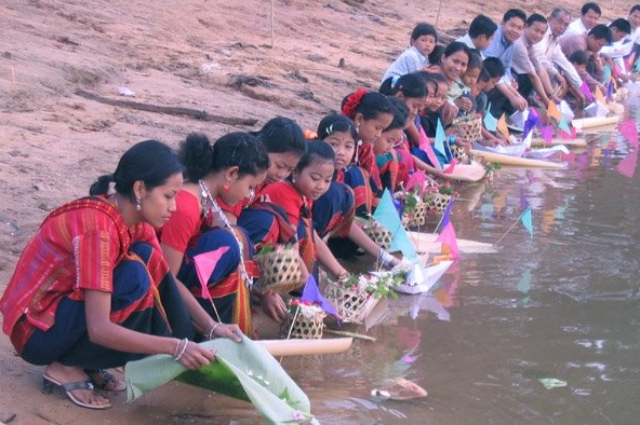In the turbulent era of the 1960s, when the tensions and rivalries between East and West Pakistan were growing, fleeing the persecutions of erstwhile East Pakistan, the Chakma and Hajong tribes arrived on Indian soil in search of a new beginning. Originally from the Chittagong Hill Tracts, the Chakma and Hajong tribes migrated from their home to the northeastern state of Arunachal Pradesh, which marked the start of a long journey of struggle and recognition in this newly adopted land. The plight of these tribes is a less-talked-about issue in the country, so let’s dive deep to understand the multifaceted issues faced by these communities.
The arrival of the Chakma and Hajong tribes in India was a consequence of two reasons. In the early 1960 s, the East Pakistani government decided to build the Kaptai dam around Chittagong tract which was built to support industrialisation, the people living in these areas were not even consulted before they decided to start the project, as a result of which around 1 lakh people were displaced that too without any compensation.
The Chakma tribe, the largest Buddhist community in the region who lived in this area, had to suffer a lot. For the Chakma tribe, this was not just a project for the development of the country, but rather it was ethnic cleansing of their population, ethnic cleansing of Buddhists in a Muslim -dominated land. It is important to note that this area was an autonomous area during British rule, and even after partition, their people were promised autonomy. However, their entire ecosystem was destroyed in the name of progress.
The Hajong tribe was a Hindu tribal community who were regularly harassed in East Pakistan. During the 1965 war, many of these Hindu communities were labeled as enemies of the land and were mistreated. The lands of the communities were seized by discriminatory laws; they were denied access to education and were not a part of any important state institutions.
The irony was that these Hindu and Buddhist communities had lived in this area for years, and yet they were being treated as outsiders in their land. They had no choice but to flee the land where they and their ancestor lived peacefully for years. This was because they had no home, no land, and no rights, so they had no option left. So, between 1964 and 1969, around 65,000 Chakmas and Hajongs migrated to a different land in search of a place to live.
So, they arrived in the northeast frontier region currently known as Arunachal Pradesh, around 65,000 of them, and the Indian government had to accommodate them on grounds of humanitarian concern and international pressure. There was a problem again, which was that these folks settled in this new land without consulting the locals, which started the cycle of being left out again from the Chakma and Hajong community, even in this new land. They were not accommodated with open arms despite the similarity in religious and cultural beliefs, for the locals were Bangladeshis who had settled in their lands.
The indigenous tribes of Arunachal Pradesh protested against this, they saw the migration of these communities as a threat to their existence. They felt that the coming of these new tribes in their land would reduce them to a minority in their own land. The people of these tribes were also not provided with an Indian citizenship, they had no voting rights, no access to higher education and government schemes. They were stateless.
A ray of hope came for these migrated tribes in the year 1996, when NHRC filed a complaint in the Supreme Court regarding the issue because Chakma tribes were facing open threats. The Supreme Court ruled that those born in India after 1950 were Indian citizens, but the problem was that the state government did not comply with this, and the marginalisation of these migrated tribes continued.
What felt like a major turning point came in 2019 when the Citizenship Amendment Act was launched. The CAA mentions the Chakma and Hajong tribal communities as a part of the “ eligible persecuted minorities from Bangladesh”. In theory, this should have solved their problem of statelessness, but it did not. The catch is that Arunachal Pradesh is protected by the “ Inner line permit,” which means that only the indigenous tribes can permanently settle there and outsiders, which also included Indian citizens, need special permits just to enter. This means that while the CAA applies in theory but in practice, it isn’t followed in Arunachal Pradesh. Why does the government act like it helped while doing absolutely nothing?
The students from Chakma and Hajong communities have been denied scholarships and school admissions, it’s hard for them to get jobs because of not having valid documents, and there is strong policing in their areas. They are still considered outsiders and live their lives in fear that they are just one government order away from being erased. They are born in India, study here, work here, but still, the land isn’t their home in its true sense. They are constantly made to feel like outsiders wherever they go.
The Chakma and Hajong communities are still struggling, resisting, and fighting for a place they can call home.

